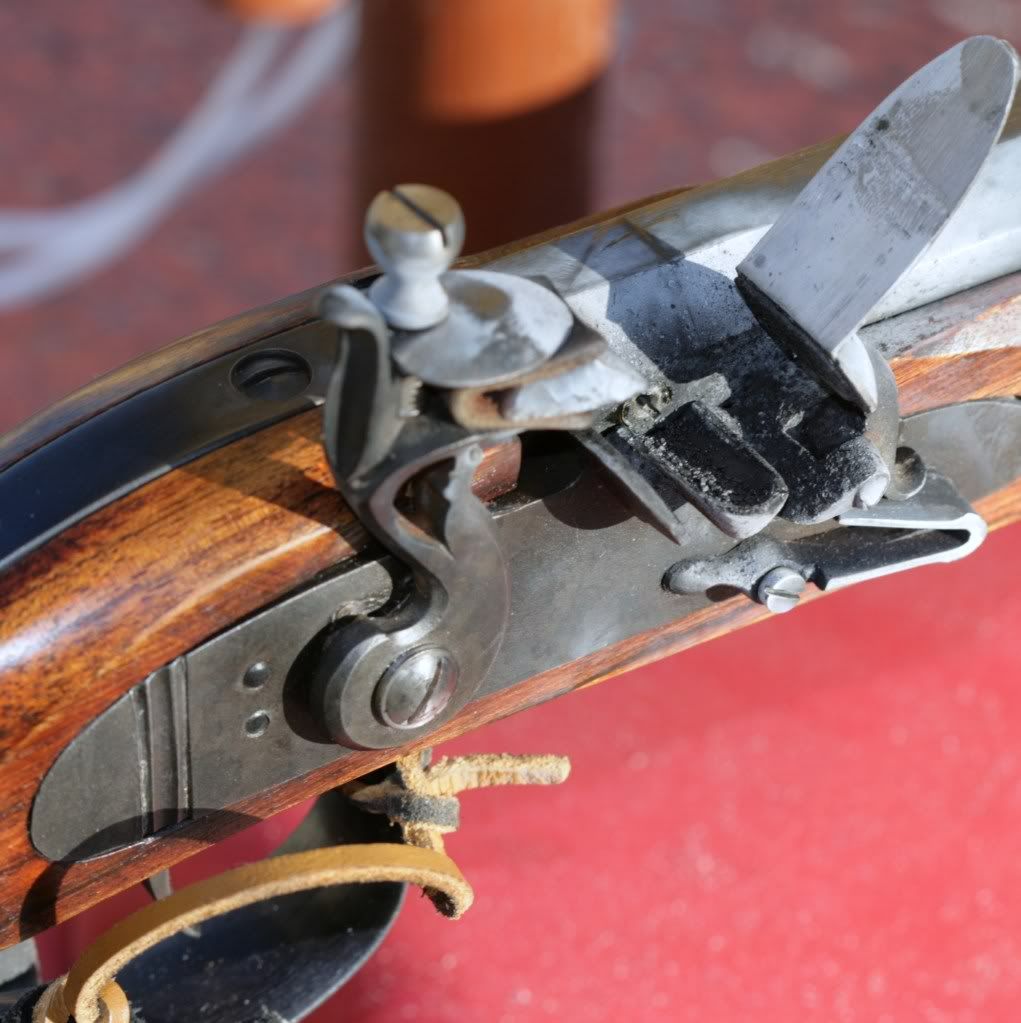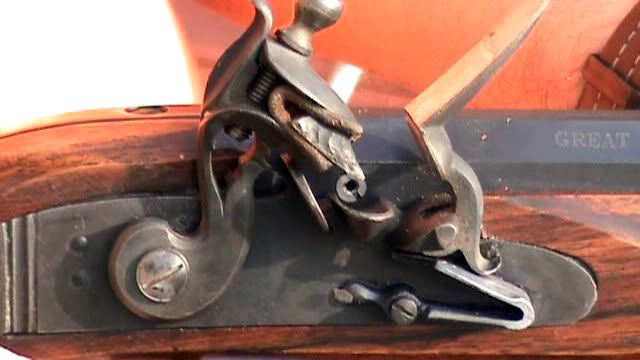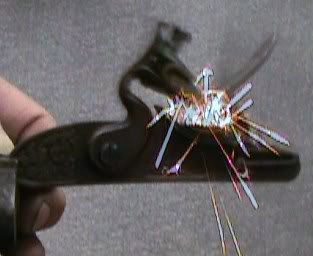To guide you in learning how to set your flint in the jaws, you need to be thinking about the GOAL you are wanting to achieve with that flint- making lots of sparks which are Thrown down into the flash pan, where, God willing, you remembered to put some powder! Think of it as " REVERSE ENGINEERING"!Sparks that are thrown forward og the pan, or dribble down the frizzen and land behind the pan wont be igniting the flash powder reliably- will they?
Lock geometry tends to control how you mount the flint in the haws- bevel up or bevel down. You want the edge of your flint to strke the face of the frizzen about 60-66% of the distance up from the heel of the frizzen, when the frizzen is closed. Any lower than that, and most frizzen will not snap open quickly enough to let the sparks go to the pan.
Set your cock at half cock, and look to see there is a gap of 1/32 to 1/16" beteen the edge of the flint, and the face f the frizzen. This allows the cock to move PAST the half cock notch before it strikes the face, yet allows enough to the flint to sit forward of the jaws to let you fire 20 or more shots before you have to move the flint forward again.
You want the flint to scrape steel from the Middle third of the face of the frizzen, snapping open when the flint reaches that bottom third position, so that the frizzen opens quickly and gives sufficient space in time to allow the sparks to be Thrown into the pan--NOT FALL into the pan! If you remove the springs from a lock, and move the parts by hand, slowly, you will quickly see that the cock moves n ONE ARC, while the frizzen moves in another.
Where the two meet, with a flint in place, creates a Pinching action that results- in a well tuned and set-up lock-- in the frizzen giving way to the heavier cock and snapping open out of the cock's way.
There are other techniques to apply in how you load the powder and ball in the barrel, how you improve transfer of the heat generated by the burning powder in the flashpan to ignite the powder in the barrel that contribute to faster ignition, but it all begins with getting the alignment of the edge of your flint located so it strikes the face of the frizzen in the correct place.
The angle of impact of the edge of the flint to the face of the frizzen at the POINT OF IMPACT is also important. Some locks are designed so that the only way you can get the AOI correct is my mounting the flint with the bevel down. Most sold here in the USA, and not made overseas, work correctly with the bevel up. As Ernie has shown many times here, you can sometime put an extra thick piece of leather between the bottom jaw and the flint wrap, which will raise the flint high enough to permit the desired Angle of Impact, and POI.
If you want specific help on your lock, you need to always tell us the make and model of your gun,or include a picture of the lock. There are different problems and answers for tuning LARGE(Musket),MEDIUM(rifle), and
SMALL(pistol/small rifle) Locks.
There are also different answers for barrel ignition problems based on whether your breech plug has a flat face, or has a "Patent-style" Breech with a powder chamber in its center.
The differences are what makes shooting flintlocks so much more interesting to do compared to other kinds of rifles. Successfully shooting a flintlock is an accomplishment to be proud about, as not just anybody knows how to do it. :hatsoff:








